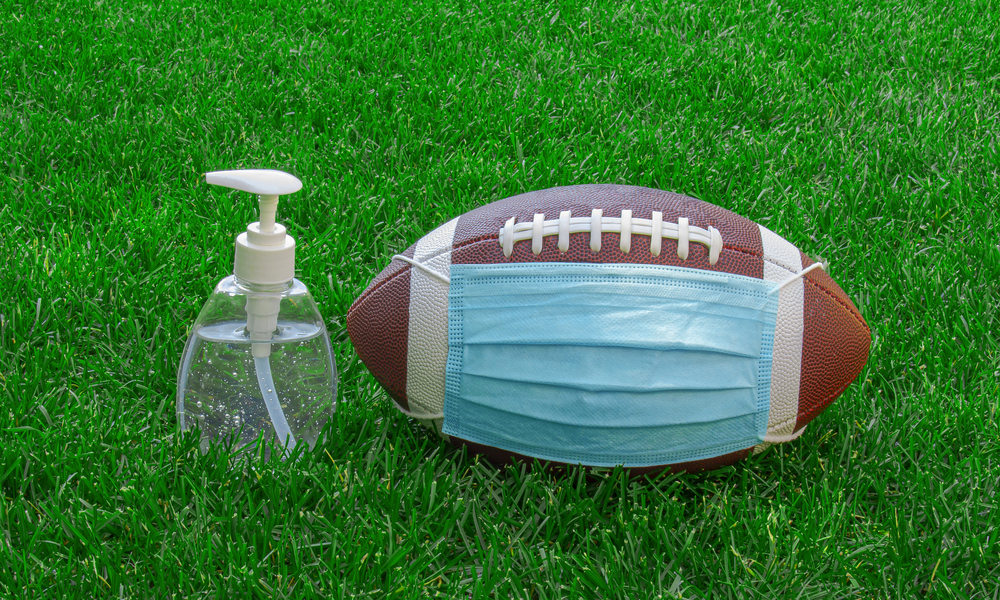
Weekly Now: How the NFL Players Association Helped Save the 2020 Season
The football league, working closely with the NFL Players Association, helped to foster a culture of tough COVID-19 testing protocols that kept the season going. Also: A long-running association-world conference gets acquired.
When it goes down in the history books, the 2020 NFL season will be seen as a surprisingly normal one given the unusual circumstances in which players competed.
A big factor was close collaboration between the NFL and the NFL Players Association (NFLPA), which implemented a robust COVID-19 testing program that allowed for quick reactions and response time throughout the season.
Many players have tested positive over the past five months—262 in total—but the games largely continued to be played. The fact that the NFL got through a whole season with few hiccups is bound to be dissected by outside observers for years to come.
Dr. Thom Mayer, the chief medical advisor for NFLPA, notes that players put themselves at personal risk to get on the field, even as they took steps to protect themselves and those around them.
“Think about what it was like for these guys when they were given the news that they had tested positive,” Mayer told USA Today. “When it was confirmed, they suddenly worried about their families and they worried about their livelihood, wondering if they could get back to their normal level of ability.”
The data-heavy response surrounding COVID-19 protocols was useful in demonstrating the need for strong protocols to prevent high-risk close contact situations. Keeping people six feet apart was not enough.
“We had to be more precise in our definition of high-risk close contacts because clearly transmission could occur outside those basic boundaries of time and distance,” NFL Chief Medical Officer Dr. Allen Sills told The Wall Street Journal.
The results of the work of the NFL and NFLPA have been put into a paper, published by the U.S. Centers for Disease Control and Prevention, that highlights ways to improve safety in potential COVID-19 exposure situations—data that could prove important for anyone putting on an event in a post-COVID world.
“This has implications far beyond the NFL,” Mayer told the Journal. “This thing is more transmissible than people thought.”
Other recent headlines:
Broadcasters put focus on D&I. The National Association of Broadcasters is putting a fresh set of eyes on diversity and inclusion. A new committee will include senior-level broadcasters from diverse backgrounds and will help to advance diversity issues to NAB’s board. “This new committee will help NAB continue moving diversity and equity forward, and provide guidance for the broadcast community in creating a more inclusive workplace,” NAB Chief Diversity Officer Michelle Duke, who also serves as president of the NAB Leadership Foundation, said in a statement. The committee will first focus on assessing the radio and television industries’ work on D&I efforts, reports RadioWorld.
Big-event moves in the association world. A prominent association-world event, digitalNow, was acquired by Sidecar, the company formerly known as AssociationSuccess.org, late last month. The digitalNOW event, launched two decades ago by Don Dea and Hugh Lee, is transitioning as Lee is planning to retire. Sidecar General Manager Chelsea Brasted said that it would keep up with the event’s “willingness to experiment and seek inspiration from untapped sources and new technologies.” She added: “The best way to honor the strength of the community Hugh and Don have so carefully built is to continue their legacy of providing a world-class conference experience and hosting critical conversations about the issues leaders face.”
No Chocolate-Covered Broccoli
Event #gamification makes about as much sense as chocolate-dipped broccoli. Don't waste money adding it to your meetings!
— Eventprofs Hangout (@epchat) February 1, 2021
New post: Gamification makes about as much sense as chocolate-dipped broccolihttps://t.co/c6rpCTKEhQ
#eventprofs #assnchat #design #education #learning pic.twitter.com/3yqNmS8z2J
Should you be adding gamification to your events?
Perhaps not, says conference facilitator Adrian Segar. In his latest post on Conferences that Work, he makes the comparison to a famous point used to describe educational software—chocolate-dipped broccoli, which references the way that fun can sometimes be wrapped around things that are inherently not fun.
Segar argues that instead, event planners should simply make their events fun.
“Justifying paying (it ain’t free) for gamification at a meeting by claiming it links fun and relevant learning is bogus,” he writes. “I’m all for participants having fun, but meeting professionals already know how to create fun experiences at events—we’ve been doing this for a long, long time.”
ICYMI …
ASAE has called on President Joe Biden to tap into the expertise of associations in his new administration.
Get a handle on your membership terms. We have a list of 25 of them for your perusal, glossary-style.
With face-to-face opportunities harder to come by, Lisa Boylan writes that video is increasingly important as a way to boost member value.
(Marvin/iStock/Getty Images Plus)






Comments